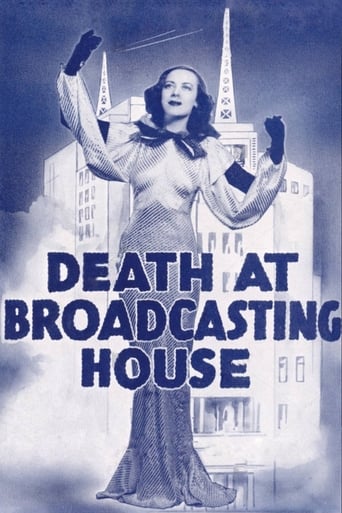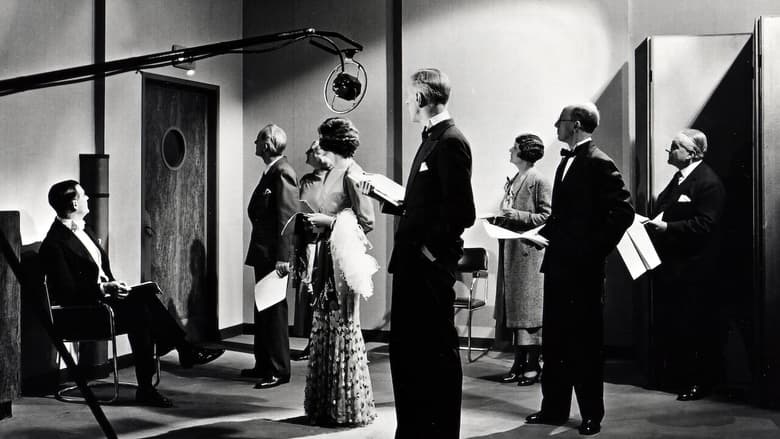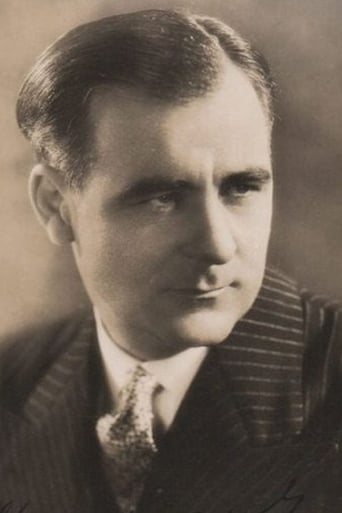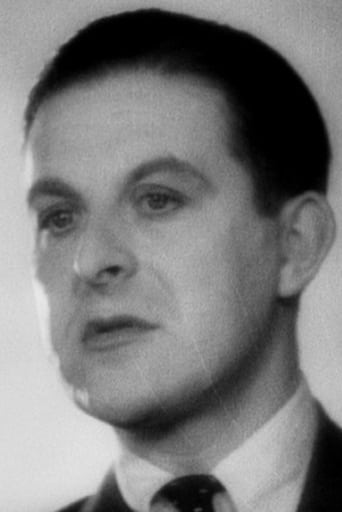

Death at Broadcasting House (1934)
An actor is murdered live on air whilst a play is being broadcast. Everyone in the play and broadcasting house fall under suspicion.
Watch Trailer
Cast


Reviews
DEATH AT BROADCASTING HOUSE is a film more interesting for its setting rather than its story, which takes the form of a rather routine murder mystery in which a group of assembled characters are investigated by the police force and various amateur detectives in turn. This film is set at the BBC with a murder taking place during a radio broadcast, a classic opening and by far the most interesting part of the production.The rest of the interest comes from seeing the BBC 'as was' back in the day. The viewer is treated to all kinds of outdated technology and the like and of course the manners and characteristics of the main players are completely alien to boot. However, with a short running time this is something of a snappy affair, enlivened by a handful of familiar faces dotted throughout the cast: Donald Wolfit is the murder victim, Jack Hawkins a would-be sleuth, Val Gielgud the producer, and one of my favourite actors of the era, Henry Kendall, playing a suspect. It's good fun for fans of this era of filmmaking.
I always give early-1930s movies the benefit of the doubt, and I'm doing so here. An actor working alone in a radio studio room is murdered while reading his lines (in which his character is murdered). Someone in the studio building at the time killed him, but whom? There are only a few possible culprits, and most aren't very well defined characters. A few years later, this probably could have been a very good movie, but it's barely passable here. I suspect much of the appeal of this film when it was released came from the behind-the-scenes look at a working radio studio, with actors in multiple rooms, and orchestra in another, and crew in still others. You even get a song and a dance number, although the appeal of a dance number on radio, including dancers in full costume, escapes me.If you enjoy 1930s crime/mysteries, then this is worth a watch. The detective doesn't define himself particularly well, but the genre plays out reasonably true to form. I gave it a 6 for slightly better than average.
This is really two stories in one. The first is the underlying plot of a murder during a live radio broadcast of a play so that the actual death by strangling of Donald Wolfit (before he became famous), is the real thing. Having been previously castigated by producer Val Gielgud (who actually wrote the film storyline as well) for not gasping properly, he is summoned to be congratulated on his improved performance only to be found stretched out on the floor, dead. There are several plausible suspects who all had the opportunity and motive to commit the crime but the actual culprit seemingly has a cast iron alibi. His unmasking therefore comes as a genuine surprise with the final chase through Broadcasting House bringing about his demise when he enters a door without realising it is a live electricity station. The second story is that of the daily routine in Broadcasting House where we are treated to two top stars of the day, Elisabeth Welch and Eve Becke, delightfully singing to the accompaniment of Ord Hamilton at the piano and Percival Mackey's dance orchestra respectively. Interweaved and connecting both stories is a gormless intruder who goes all over the building in search of the Variety studio, upsetting everyone in the process and also becoming a prime murder suspect. Other people come and go, mischievously signing autographs outside the front door. A gripping film, the only disappointment being that the police inspector never reveals his evidence until right at the end, thus depriving the viewer of accurately guessing whodunit.
This is a fascinating look at broadcasting in 1932.This film has what can only be described as an all star cast with 3 standouts.Ian Hunter before he went off to Hollywood to become King Richard;Donald Wolfitt to become very famous as one of Britains leading stage actors :Jack Hawkins who of course achieved stardom in the fifties.This is a whodunit allied to a sort of variety show and behind the scenes look at broadcasting.Being a whodunit it displays all the usual clichés including a denouement where all the suspects are present and the actual murderer draws a gun in an attempt to get away.There is a priceless exchange in the chase that follows.The police are chasing the suspect up a spiral staircase,the policeman asks one of the BBC producers "Where does this staircase lead"to which comes the immortal reply "upstairs".If you are as interested by this era as i am then i am sure that in the unlikely event of this film being shown again on TV don't miss it.




